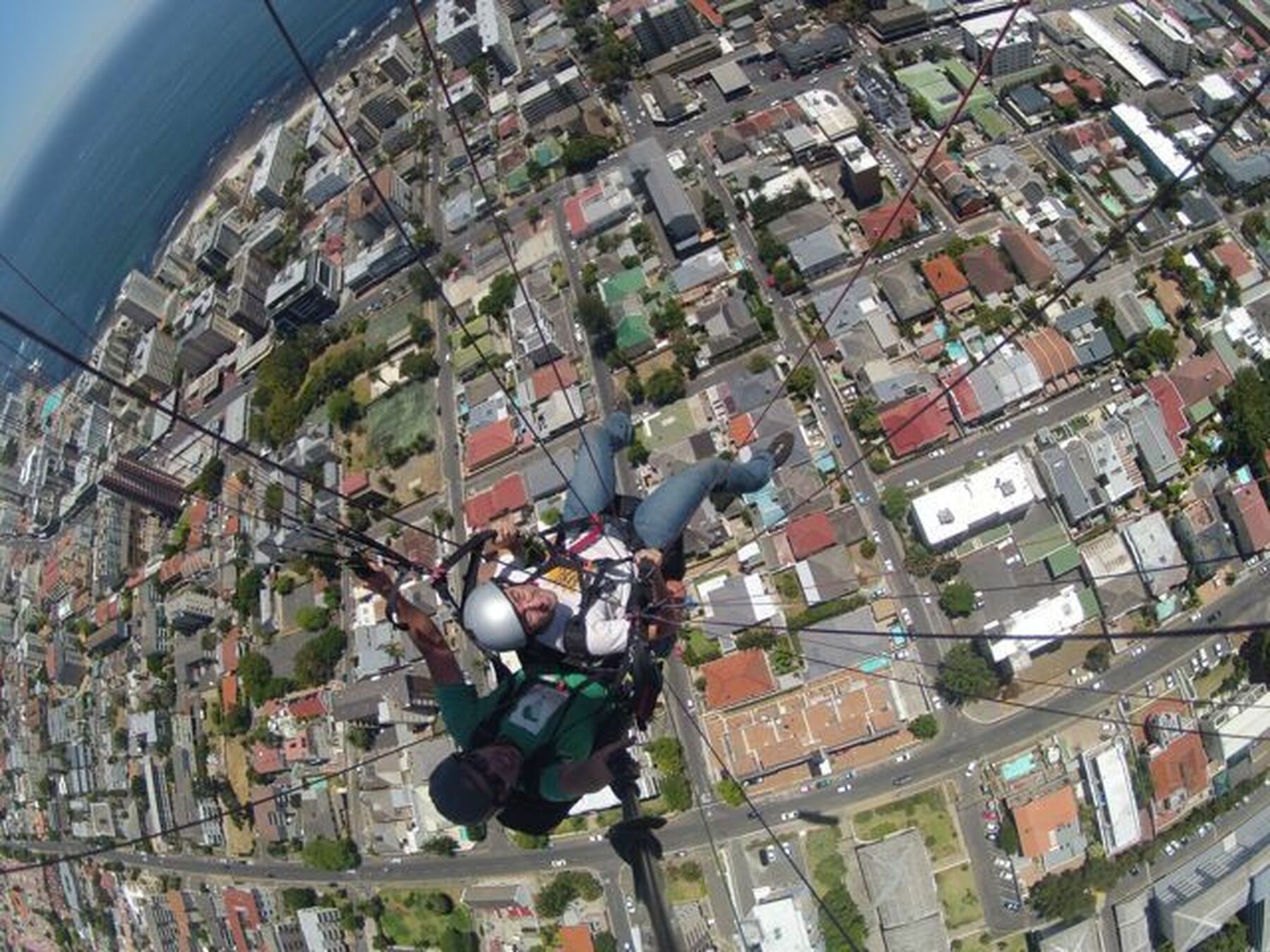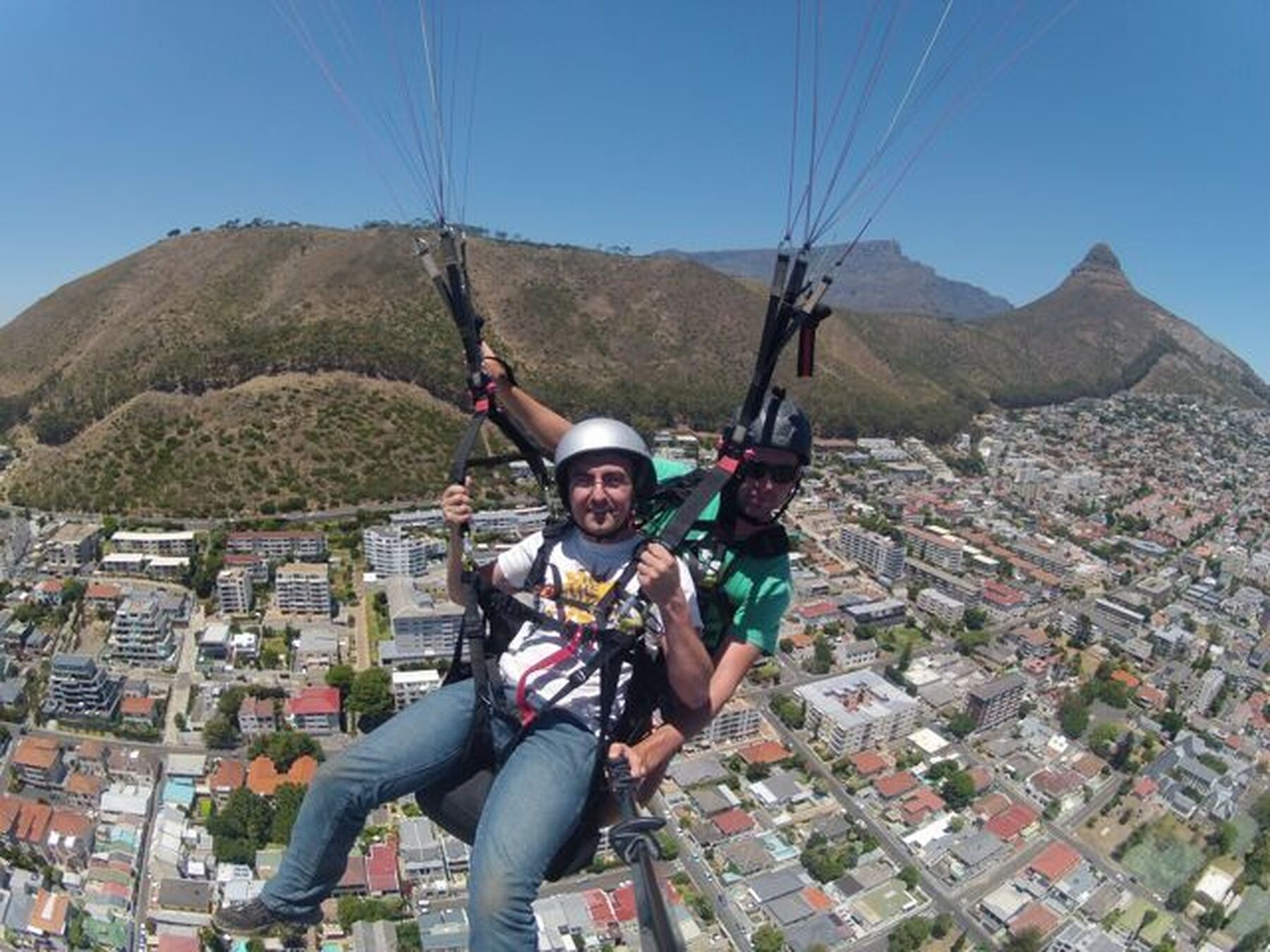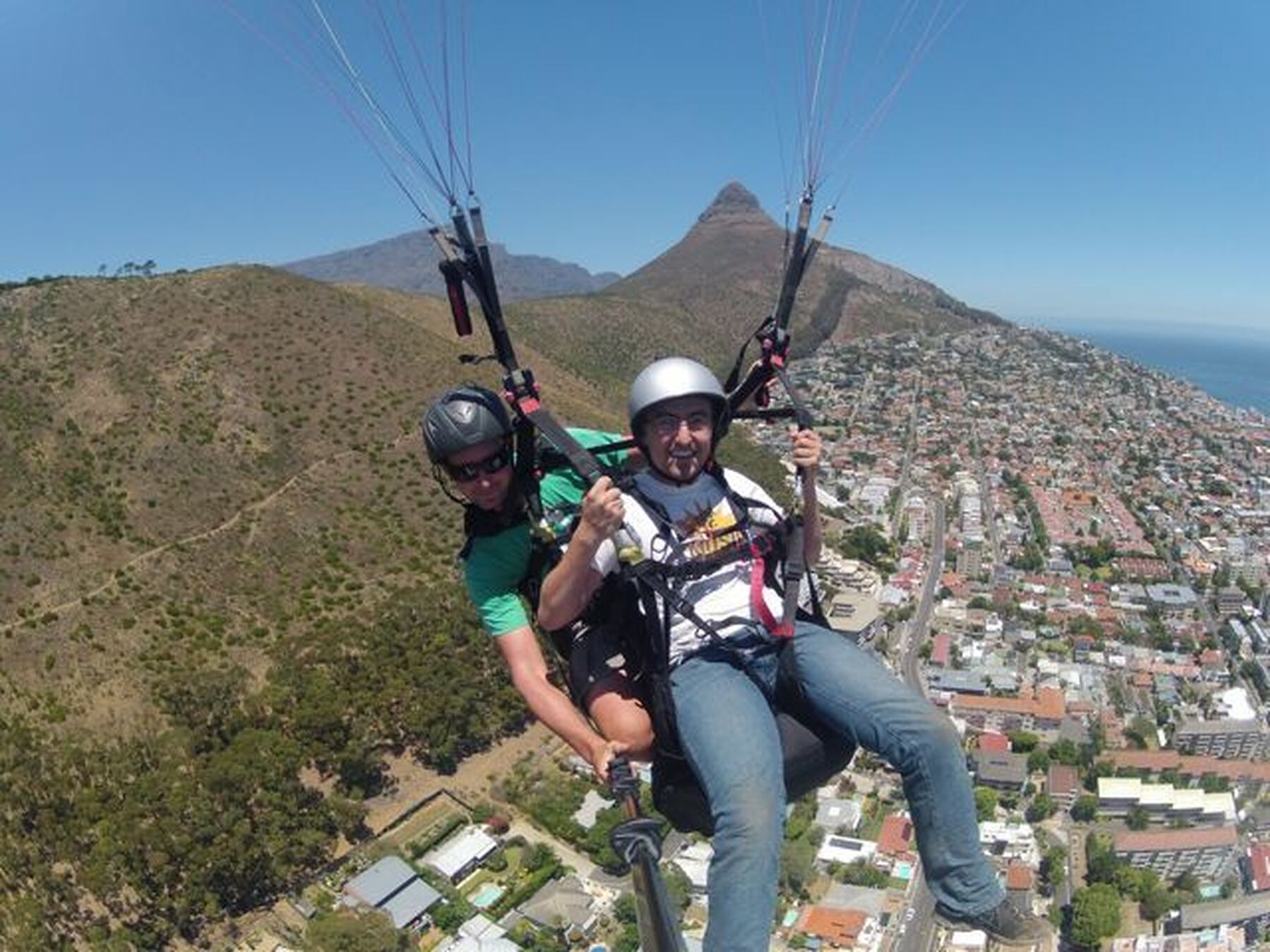On the 26th anniversary of my birth, I stared down death. In the face. And then poked death in the eyeball and ran away.
Okay, not really, but paragliding was certainly one of the more death-defying activities I’ve undertaken.

In the extreme sports world, it’s about as fraught with danger as playing chess. I mean, in Cape Town alone, people go swimming with animals that have lots of spiky teeth at one end, or abseil from dizzy heights, or even do their best flying squirrel impersonation and BASE jump off things.
In my world, however, it was a pretty scary prospect to run off the side of a hill and let whatever whim the wind decides to take, determine my fate.
So why did I decide to do it? Well, from a distance, it looks like a whole lot of fun. I see the paragliders almost every Sunday as they float on by, and I’ve always wondered what that feels like. I also think that facing your fears should be done incrementally – a paraglide today, a Felix Baumgartner-style freefall from the edge of space tomorrow, if you like.
Moral support is also a good motivator, and so I convinced my girlfriend to come with me (she has been bungee-jumping, and thus in my books she counts as good authority on all things that result in hurtling through the air). The two of us booked, got ourselves up to Signal Hill and got strapped in.
You can either jump from Lion’s Head or Signal Hill, depending on the weather and the wind on the day. My guess is that you spend more time in the air when jumping from Lion’s Head, but on this day, our journey consisted of a short route from Signal Hill (right there where people watch the sunsets ... and I suspect to watch paragliders potentially make fools of themselves) to the Sea Point Promenade, about 900m as the crow flies.

Well trust me, paragliders are nothing like crows. Firstly, our take-off would have made a crow look as graceful as a swan. It also took two attempts. My girlfriend went first, and just watching her first aborted attempt at leaving the ground behind was enough to get my heart going. Instead of leaving it behind, she sort of careened into it from a sideways angle, the chute already in the air and seemingly oblivious to whether its passengers were coming with it or not.
This failing to take off on the first launch is actually commonplace, as I was soon to find out. On try number two, there was the right amount of wind, running and non-careening, and I watched her soar into the sky, until her chute disappeared around the hill.
It was a while before my jump came. And when it did, I also messed it up. I suppose it was a natural instinct that when my feet left the ground, I stopped running. But no. With paragliding, you leave your physics, and your dignity, at home. The trick is to keep running in the air, like some kind of 8-bit video game character. So my first attempt ended up with me in the dirt, and with my paraglider instructor none too pleased at having to drag me back up to the launch spot.
Attempt number two was, according to my instructor, perfect. I ran in mid-air and brushed the ground briefly once or twice before the wind picked us up and lifted us off altogether. Your backpack doubles as a seat, and so my involvement with the rest of the flight was minimal. I could sit back and make terrified noises at my leisure. Which I did.
I also tried to soak in the various sensations you can feel – the tug of the chute on your shoulders as it catches the air; the lurch upward as you hit a thermal; the sudden drop of speed as you leave it. You get to watch the ground pull away, and then come crashing towards you once again, as you dart around the sky. Rocks that look like huge boulders suddenly shrink into pebbles as you leave Signal Hill behind you and reach cruising altitude above Sea Point.
The zig-zagging over Signal Hill was exhilarating, made slightly more so by a frequent beeping noise from a machine somewhere behind my head. I asked my instructor exactly what he was doing, just so I knew, and just to make sure he did too. He said that he looks for bushes and shrubs that are moving in the wind, which indicates that there is a thermal nearby, and then heads for them. The beeping machine helped measure our altitude.

We cruised over Sea Point and took some snaps. This meant that I held on for dear life, and grimaced at the camera – a GoPro strapped to the end of a telescopic rod – while my instructor held it up at various angles to capture the terrifying moment. It was during the third photo when I realised that all this picture-taking was getting in the way of one important thing: the steering. Was my instructor simply carrying me to my doom – a modern-day, safety helmet-wearing Angel of Death?
No. Turns out we were cruising quite comfortably and the paraglider didn’t need steering. Great.
The view was incredible. There’s so much to look at in Cape Town from the ground, and from the sky it’s even more impressive. And not being limited to peering out of a window, but instead being out there in the open air to see it all, was quite something.
Read Stuart’s full blog here.
